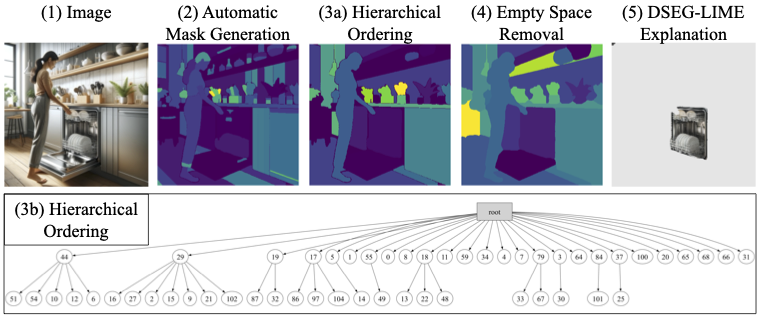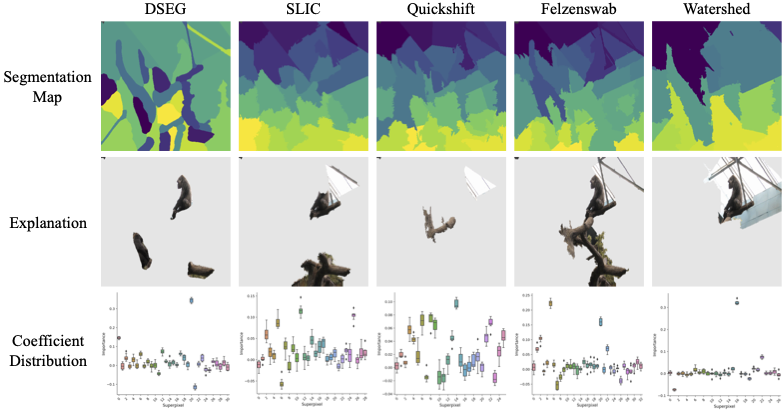Abstract
Explainable Artificial Intelligence is critical in unraveling decision-making processes in complex machine learning models. LIME (Local Interpretable Model-agnostic Explanations) is a well-known XAI framework for image analysis. It utilizes image segmentation to create features to identify relevant areas for classification. Consequently, poor segmentation can compromise the consistency of the explanation and undermine the importance of the segments, affecting the overall interpretability. Addressing these challenges, we introduce DSEG-LIME (Data-Driven Segmentation LIME), featuring: i) a data-driven segmentation for human-recognized feature generation, and ii) a hierarchical segmentation procedure through composition. We benchmark DSEG-LIME on pre-trained models with images from the ImageNet dataset - scenarios without domain-specific knowledge. The analysis includes a quantitative evaluation using established XAI metrics, complemented by a qualitative assessment through a user study. Our findings demonstrate that DSEG outperforms in most of the XAI metrics and enhances the alignment of explanations with human-recognized concepts, significantly improving interpretability.
Overview
Image (1) serves as the initial input, leading to its automatic segmentation depicted in (2). The hierarchical tree generated from this segmentation is illustrated in (3b), and (3a) showcasing the mask composed of first-order nodes. Image (4) displays the finalized mask created after eliminating empty spaces, which is fed back into the sample generation of LIME. Image (5) represents the resultant explanation within the DSEG-LIME framework. A generative model generated the instance in three distinct variations: featuring a woman, featuring a man, and without any person, aiming to detect potential gender biases in the EfficientNetB4 model.

Compared to other Segmentation Algorithms
